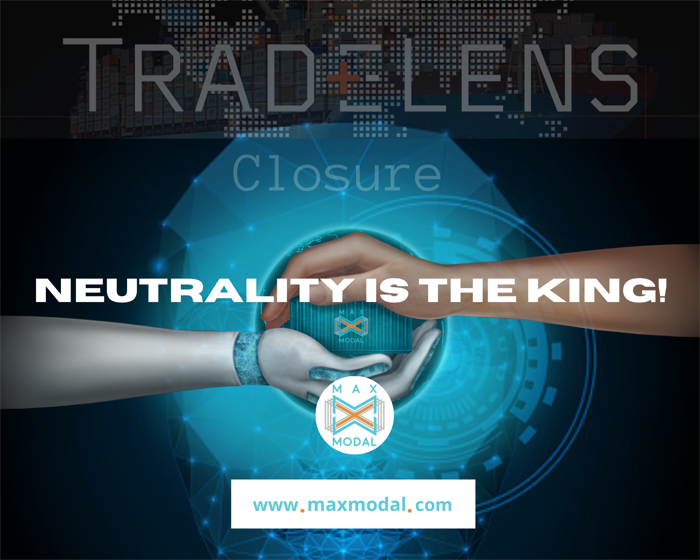Neutrality is the king!
The other day the news about the closure of the Tradelens made it to the headlines, and now world experts are discussing different reasons that led to this decision. However, back in the day in 2017, the founders of MAXMODAL spoke directly with the IBM vice president about the unviability of the Tradelens project for one particular reason: it was not neutral. At that point, this argument was not taken seriously, and the word "neutrality" sounded alienated. But after 5 years, we can witness a bright example of the situation when it does not matter how much market power, technology, money, and other resources you have. Anyone who aims at digitalization as the entire transport and logistics industry altogether, and not just a single company or supply chain, must be neutral. Jens Roemer, the Chair of FIATA’s working group, agrees with us: “…There is no neutrality and, for a tool like this, neutrality is essential.” What does “a neutral digital solution” mean? Let's dive into it.
Firstly, if among the participants of such a solution, there are companies from the industry, then their share must be minor. Otherwise, competitors simply will not trust sensitive data to such a system, which is basically what happened to Tradelens. In 2018, there was extensive criticism of the lack of neutrality of this solution from other shipping lines. Maersk did not listen and decided not to change the format of the Joint Venture, in which it had a share of 51%.
It was decided to prove the neutrality of the solution by involving other significant players, competitors of Maersk. Moreover, the company understood that the inclusion of competitors was a matter of project survival. That's when the media received the news that key competitors (CMA CGM and MSC) joined Tradelens. However, this step not only did not help to solve the problem, but exacerbated it.
Finally, on February 6, 2020, at the level of US antitrust legislation, they were recognized, de facto and de jure, as an alliance of carriers, and not an IT solution. This decision drastically reduced the scope for expanding the functionality of the project. Similarly, Tradelens was perceived as an ordinary alliance under the guise of digitalization by regulators in Europe and China.
Let's go back to neutrality. The second principle of it is the condition that the digital system should not be engaged in the business of its customers at the operational level. What does it mean? It means that all kinds of digital forwarders will not be able to unite the entire industry, simply because they still use the conventional, a century-old business model, where they aim to buy cheaper freight from carriers and sell it for higher prices to cargo owners. The only difference from the past is that now they use digital tools to achieve this goal. This is also true for those who came to the industry externally, for example, such players as Amazon, Alibaba (Cainiao), Flexport, Convoy, and others.
The third principle of neutrality is the universality of a digital solution when it is suitable for all modes of transport and all types of industry participants. In other words, the solution must be multimodal. Are there many such digital solutions on the market today? The answer is “No.” There are mostly monomodal digital platforms and those who claim to have the status of a multimodal solution break the previous two principles. They either operate as forwarders at the operational level and / or are established by industry participants. Therefore, the Global Shipping Business Network and DP World’s Cargoes have little chance of global success.
Now it makes sense to wonder, is it really possible to create a neutral solution? Yes, it is possible and MAXMODAL is a prime example of it. MAXMODAL connects market players worldwide through routes and rates in a digital multimodal network to automate business processes across the industry. Learn more at www.maxmodal.com.

